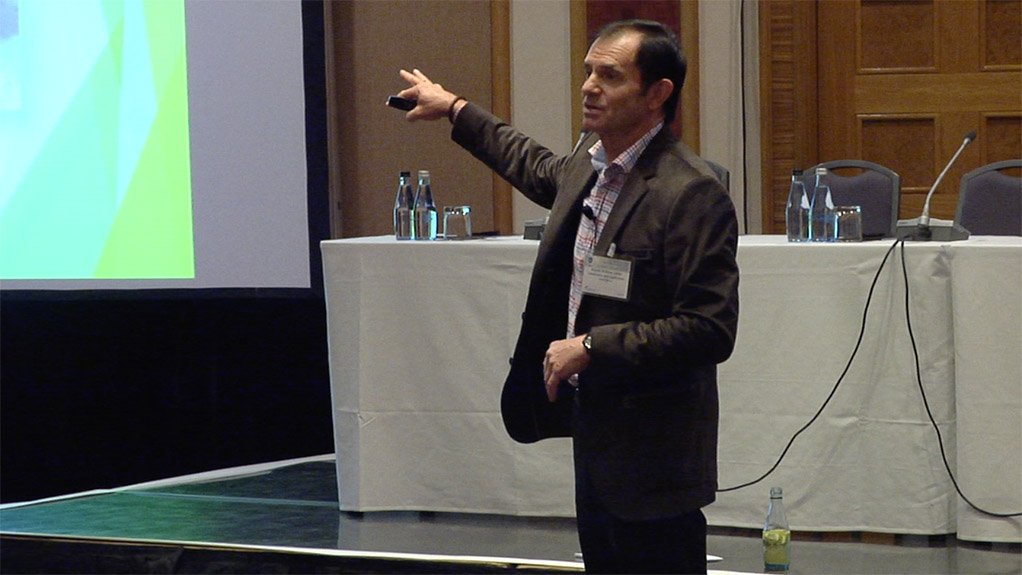Threat of a fire ever present at mines – consultant



Collaborative Risk Applications CEO Schalk Willem Lubbe discusses ways of effectively dealing with fires at mines
SCHALK WILLEM LUBBE An underground fire is one of the most traumatic experiences that a person can ever endure
Photo by Nicholas Boyd
The risk of a fire occurring at a mine is a significant threat that South African mines are well aware of and try to prevent, states industrial risk solutions provider Collaborative Risk Applications CEO Schalk Willem Lubbe.
“It is clear that all fires cannot be prevented. We are, therefore, obligated to produce our best efforts in terms of finding solutions and funding to support these solutions to reduce the impact of fires that we cannot prevent.”
He highlights that an underground fire is one of the most traumatic experiences a person can go through.
“I have yet to meet a mine management team that does not rate fire as one of the most significant threats to its business. Fire still represents one of the most severe threats to which a mining operation can be exposed,” Lubbe asserts.
Fires that occur on the surface areas of mines should present a much reduced risk to physical assets and people, provided inappropriate action during the fire is not taken, Lubbe says.
Areas of particular concern include, but are not limited to, confined areas, such as conveyor tunnels and lubrication rooms; electrical cable tunnels; flammable liquids and gases in cylinders or in bulk form; reactive chemicals; and elevated conveyor systems, transfer towers and silos.
Other areas include large warehouses and storage facilities, massive grass fires at a mine site, large mobile plants and machinery, as well as explosives storage and handling.
Lubbe further points out that mines are often located in remote areas and, therefore, have to depend on their own resources to handle any fire.
Larger mines usually have adequate resources to be self-sufficient in this regard, which could include having fully equipped mobile fire trucks, trained fire teams and sufficient fire hydrants that are supported by fire booster pumps, as well as static water reservoirs with enough water for at least two hours, he adds.
He acknowledges that, owing to the high cost of maintaining fully manned and equipped fire trucks, as well as mobile pumpers, smaller mines have to make do with hand and wheeled fire extinguishers, and very few fixed fire protection systems.
“However, the loss of key assets and processes, and the disablement or death of a staff member are no less serious for small mines than for a larger operation,” Lubbe emphasises.
He adds that rapid responses to fires will significantly reduce their severity and the consequential losses.
Lubbe notes that fires associated with opencast mines can be dealt with using firefighting equipment similar to that used for surface operations.
He says large surface drilling machines and mobile mining plants are some of the equipment that are most at risk of catching fire.
Lubbe explains that mobile plants are moved around and might be located some distance from one another – in addition to other opencast mining activities – which makes the installation of sitewide fire hydrants impractical.
Moreover, he notes that standard fire trucks will usually not be efficient, owing to the terrain it has to cross to get to a mobile plant in the openpit.
Lubbe says that large water-carrying tankers used for dust suppression might be adapted to feed water to firefighting water monitors fixed to the tankers.
However, he explains, it takes only four minutes for a fire to get out of control, and tankers are likely to be stationed some distance away from the affected area; therefore, it might take the tankers too long to arrive to prevent an item of equipment from being destroyed.
He adds that the rapid detection and extinguishing of fires involving mobile plants in openpit operations depend heavily on the efficacy of automated on-board fire suppression systems.
“The value of these machines and the contribution that each piece of equipment makes to overall production justifies the cost of on-board automated fire protection,” Lubbe asserts.
However, he says, the current design, fabrication and installation of on-board fire-protection systems and the efficiency of the systems remain a source of “great concern”.
Lubbe says fire protection systems are generally very costly, particularly owing to the amount that a mine has to invest to ensure adequate protection against fires occurring at large mining sites.
He argues that mine management teams still regard these systems as a ‘grudge buy’.
Lubbe says this type of attitude results in money being spent on any kind of protection just for the sake of compliance, in the hope that the problem will “go away” and the line item will be removed from the audit report.
“Fire risks must be viewed in the context of mine design, emergency preparedness, the avail- ability of firefighting resources, training and outside assistance (proto teams, municipal fire brigades and adjoining mines), as well as the availability of sufficient water resources. These factors will influence the fire emergency preparedness of a mine.”
Lubbe was speaking at business-to-business events organiser Fleming Gulf’s 2015 African Mine Security Summit, held in Johannesburg last month.
Comments
Press Office
Announcements
What's On
Subscribe to improve your user experience...
Option 1 (equivalent of R125 a month):
Receive a weekly copy of Creamer Media's Engineering News & Mining Weekly magazine
(print copy for those in South Africa and e-magazine for those outside of South Africa)
Receive daily email newsletters
Access to full search results
Access archive of magazine back copies
Access to Projects in Progress
Access to ONE Research Report of your choice in PDF format
Option 2 (equivalent of R375 a month):
All benefits from Option 1
PLUS
Access to Creamer Media's Research Channel Africa for ALL Research Reports, in PDF format, on various industrial and mining sectors
including Electricity; Water; Energy Transition; Hydrogen; Roads, Rail and Ports; Coal; Gold; Platinum; Battery Metals; etc.
Already a subscriber?
Forgotten your password?
Receive weekly copy of Creamer Media's Engineering News & Mining Weekly magazine (print copy for those in South Africa and e-magazine for those outside of South Africa)
➕
Recieve daily email newsletters
➕
Access to full search results
➕
Access archive of magazine back copies
➕
Access to Projects in Progress
➕
Access to ONE Research Report of your choice in PDF format
RESEARCH CHANNEL AFRICA
R4500 (equivalent of R375 a month)
SUBSCRIBEAll benefits from Option 1
➕
Access to Creamer Media's Research Channel Africa for ALL Research Reports on various industrial and mining sectors, in PDF format, including on:
Electricity
➕
Water
➕
Energy Transition
➕
Hydrogen
➕
Roads, Rail and Ports
➕
Coal
➕
Gold
➕
Platinum
➕
Battery Metals
➕
etc.
Receive all benefits from Option 1 or Option 2 delivered to numerous people at your company
➕
Multiple User names and Passwords for simultaneous log-ins
➕
Intranet integration access to all in your organisation




















